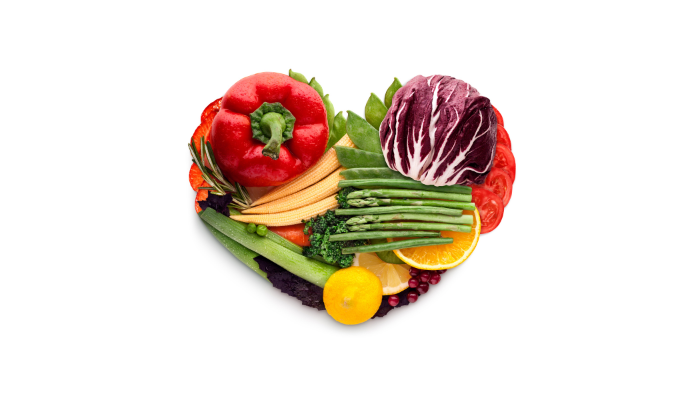February is American Heart Month. Did you know that heart disease accounts for nearly one-third of all deaths worldwide? Diet plays a major role in heart health and can impact your risk of heart disease. Here at Wellhaus we value heart health and recognize that there are foods that can have the power to improve your quality of life and the functionality of your heart. Here are some tips on which foods you should be eating on the path to a healthier heart.
Eat more fruits and veggies
Fruits and vegetables are an essential part of a heart healthy diet for a number of reasons. Not only are they low in calories and high in fiber, but they also provide a great source of vitamins, minerals, and other substances that may help prevent cardiovascular disease. Incorporating more fruits and vegetables into your diet doesn’t have to be difficult–keep vegetables washed and cut in your fridge for quick snacks, have a fruit bowl in the kitchen for easy access, and choose recipes that have vegetables and fruits as the main ingredients. Get creative!
Limit unhealthy fats
An important step to reducing your blood cholesterol and lowering your risk of coronary artery disease is to limit how much saturated and trans fats you eat. High blood cholesterol levels can clog your arteries, which in turn can increase your risk of a heart attack and stroke. Limit these fats in your diet by choosing lean meats and using low-fat substitutions when possible. When you do use fats, choose monounsaturated fats and polyunsaturated fats like olive oil, certain fish, avocados, nuts, and seeds.
Reduce your sodium intake
Extra sodium in the bloodstream can increase water retention in blood vessels and increase your blood pressure. Too much sodium can also cause bloat as well. Sodium pulls water into your blood vessels, causing higher blood volume and an increase in blood pressure. Eating less sodium can reduce your risk for high blood pressure and bloating. Reducing the amount of salt you add to food at the table or while cooking may help, but much of the salt you eat comes from canned or processed foods like baked goods and frozen dinners. Focus on eating fresh foods to help cut down on the sodium in your diet.
Go for whole grains
Whole grains are a good source of fiber that play a role in regulating blood pressure and heart health. Whole grains also contain B vitamins, folic acid, iron, magnesium, selenium, and other nutrients that can often be lost in the refining process–that’s why it is important to incorporate whole grains instead of refined grains in your diet when considering your grain intake. Whole grains help improve blood cholesterol levels and lower risk of heart disease, stroke, obesity, and type 2 diabetes.
Control your portion size
How much you eat can be just as important as what you eat, so being aware of portion size is a great way to optimize your heart health while eating. The portion size served in restaurants in America is much larger than the actual portion sizes recommended by nutrition and health professionals. Did you know that half of your plate should be filled with veggies? And that the protein you consume should be about the size of the palm of your hand? Use a smaller plate or bowl to help control your portions, or eat larger portions of low-calorie/nutrient-dense foods that will keep you feeling full and satisfied without adding any extra calories.
Ongoing medical research continues to provide stronger and stronger evidence of the link between diet and heart disease. What you put into your body has a direct impact on just about every aspect of your health. Making an active effort to incorporate these tips and tricks into your everyday diet will help you keep your stomach happy and your heart healthy. Happy American Heart Month!


Recent Comments